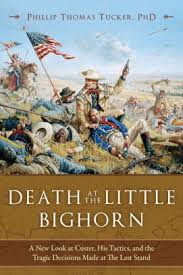Phillip Thomas Tucker, PhD, is the author of more than 40 ground-breaking books on a wide variety of subjects in American history. The award-winning author of many "New Look" books of unique distinction, Phillip Thomas Tucker, PhD, wrote Cathy Williams, From Slave to Female Buffalo Soldier (2002), and America's Female Buffalo Soldier: A New Look at the Life of Cathy Williams in History and Memory (2017). Dr. Tucker was the first author to write a book about the remarkable life of Cathy Williams. The author has devoted much of his distinguished writing career to exploring the lives of forgotten African Americans, both men and women, to reveal their stories for the first time.
Cathy Williams, as the title of the book indicates, was born into slavery in 1844 near Independence, Missouri. She served as a house servant in the Independence, Missouri, home of William Johnson until the Civil War when Union troops freed her from service during the summer of 1861. At that time, Williams became a servant for the Union Army, cooking and washing uniforms for Federal officers, including at least one general, until the war's end in 1865.
Disguised as a man by the name of William Cathay, Cathy Williams joined the 38th United States Infantry, Company A, also known as the Buffalo Soldiers, at Jefferson Barracks, Missouri, on November 15, 1866. This distinguished unit of African-Americans men, almost all former slaves, was assigned arduous service across the western frontier.
In October 1868, Williams became ill and required medical care at a remote fort in New Mexico. A military doctor discovered her biological sex, and she was discharged from the Army, after nearly two years of faithful service to her country. Cathy then remained in the West, where she became a self-sufficient and resourceful pioneer woman. Cathy Williams left a distinguished legacy--the first African American woman to serve in the United States Army. Therefore, Cathy Williams was a true pioneer for all African American women who serve today in the United States military.
Cathy Williams, as the title of the book indicates, was born into slavery in 1844 near Independence, Missouri. She served as a house servant in the Independence, Missouri, home of William Johnson until the Civil War when Union troops freed her from service during the summer of 1861. At that time, Williams became a servant for the Union Army, cooking and washing uniforms for Federal officers, including at least one general, until the war's end in 1865.
Disguised as a man by the name of William Cathay, Cathy Williams joined the 38th United States Infantry, Company A, also known as the Buffalo Soldiers, at Jefferson Barracks, Missouri, on November 15, 1866. This distinguished unit of African-Americans men, almost all former slaves, was assigned arduous service across the western frontier.
In October 1868, Williams became ill and required medical care at a remote fort in New Mexico. A military doctor discovered her biological sex, and she was discharged from the Army, after nearly two years of faithful service to her country. Cathy then remained in the West, where she became a self-sufficient and resourceful pioneer woman. Cathy Williams left a distinguished legacy--the first African American woman to serve in the United States Army. Therefore, Cathy Williams was a true pioneer for all African American women who serve today in the United States military.


